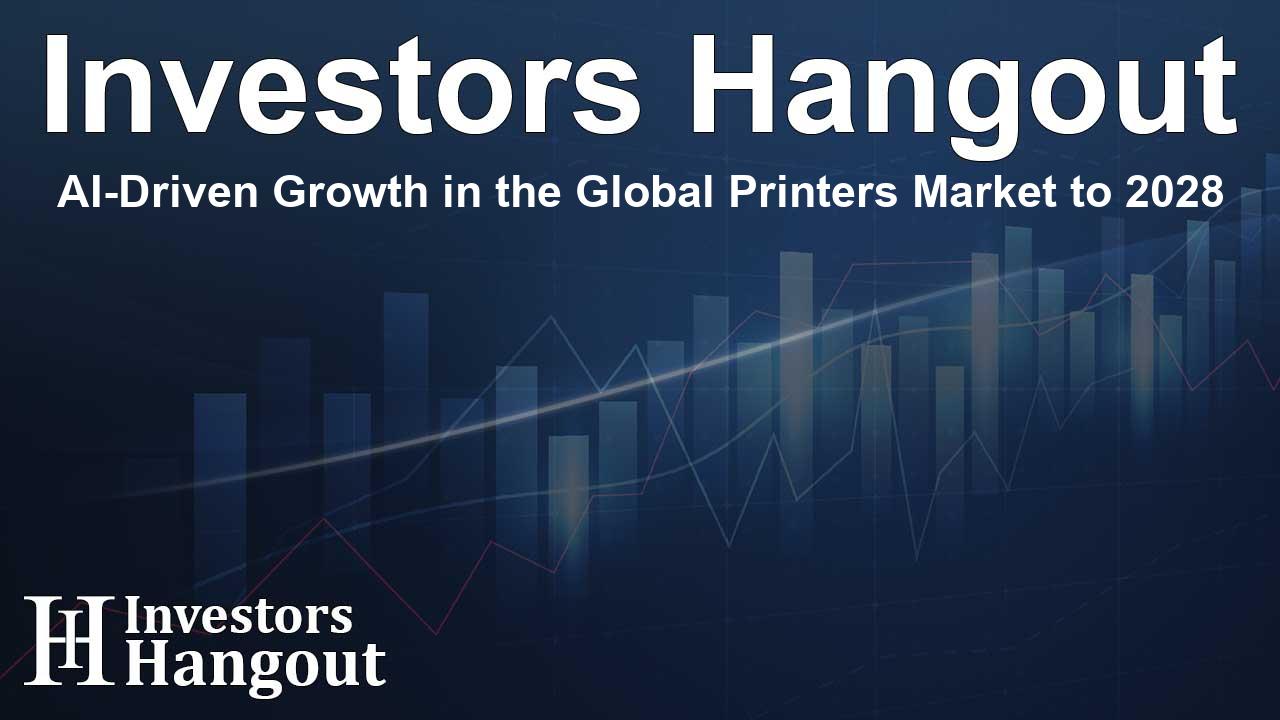AI-Driven Growth in the Global Printers Market to 2028

Growing Demand in the Printers Market Fueled by AI
The global printers market is on the verge of significant transformation, driven by advancements in artificial intelligence (AI) and an increase in the demand for printing solutions from small and medium enterprises (SMEs). According to industry analysis, the market is projected to experience a substantial growth of USD 10.65 billion from 2024 to 2028, with a compound annual growth rate (CAGR) of approximately 3.46%. This growth is largely attributed to the expanding adoption of innovative technologies and increasing printing requirements across various sectors.
Technological Advancements in the Market
Technological changes are reshaping the printing landscape, with AI playing a pivotal role. Printers have become essential tools that convert digital documents and images into hard copies for businesses, educational institutions, and individuals. The rise of mobile printing, alongside traditional inkjet and laser printing methods, is enhancing convenience for users. Moreover, the introduction of 3D printing is emerging as a game-changer, initially serving prototyping needs but now extending to industries such as healthcare and manufacturing.
Market Drivers and Trends
Several trends are propelling the printers market forward. The sector is witnessing a surge in the popularity of multifunction printers (MFPs), which combine various functions such as scanning, copying, and faxing into a single device. These printers offer significant advantages in terms of space-saving and operational efficiency. Furthermore, the printing industry is progressively addressing environmental issues by incorporating sustainable materials such as ocean-bound plastics in production.
Shift Towards 3D Printing Technology
3D printing technology, initially perceived as a niche market, is now penetrating mainstream manufacturing processes, improving operational efficiency, particularly in industries like aerospace and healthcare. In healthcare, customized medical devices, and implants are being developed through this technology, which significantly enhances patient care. Consequently, major players in the market are investing heavily in 3D printing innovations, responding to preferences for more efficient, tailored solutions.
Challenges in the Printing Sector
Despite the positive outlook, the printers market faces considerable challenges, particularly from the growing trend of digitization within enterprises. As businesses shift towards delivering content digitally — utilizing e-brochures, e-catalogs, and other online formats — the demand for traditional printing may decline. This shift necessitates that printer manufacturers innovate continuously to meet changing preferences and requirements.
Environmental Concerns and Their Impact
In addition to technological advancements, environmental concerns are shaping consumer behavior toward printing products. Companies are under increasing pressure to reduce their carbon footprints and minimize waste. As a result, many are exploring the use of renewable materials and implementing energy-efficient production processes. The market landscape is changing as businesses seek to meet both operational needs and growing sustainability expectations.
Market Segmentation and Insights
The printers market can be segmented broadly by technology, type, and geography. Under technology, the main categories include laser, inkjet, and others. The segmenting by type includes multifunction printers and single-function printers, highlighting ongoing consumer preferences for versatile printing solutions. Geographically, the market shows substantial contributions from regions such as Asia-Pacific, Europe, and North America, with Asia-Pacific leading at an impressive 52% share.
Key Players in the Market
Notable companies operating within the global printers market include Bixolon Co. Ltd., Brady Corp., Canon Inc., HP Inc., and Zebra Technologies Corp. Their commitment to innovation positions them advantageously to capitalize on expanding opportunities alongside the growing trends in artificial intelligence-driven printing solutions.
Frequently Asked Questions
What factors are driving growth in the printers market?
The main drivers include increased demand from SMEs, advancements in AI, and the rising popularity of 3D printing technology.
What challenges does the printing industry face?
The industry grapples with the impact of digitization, which leads to reduced demand for traditional printing products.
How is sustainability influencing the printers market?
Environmental sustainability has led companies to adopt eco-friendly materials and energy-efficient practices in production.
What is the significance of 3D printing in the market?
3D printing is increasingly being adopted in several industries, enhancing operational efficiencies and offering customized solutions.
Who are the key players in the global printers market?
Key companies include Bixolon Co. Ltd., Brady Corp., Canon Inc., and HP Inc., all driving industry innovation and growth.
About Investors Hangout
Investors Hangout is a leading online stock forum for financial discussion and learning, offering a wide range of free tools and resources. It draws in traders of all levels, who exchange market knowledge, investigate trading tactics, and keep an eye on industry developments in real time. Featuring financial articles, stock message boards, quotes, charts, company profiles, and live news updates. Through cooperative learning and a wealth of informational resources, it helps users from novices creating their first portfolios to experts honing their techniques. Join Investors Hangout today: https://investorshangout.com/
Disclaimer: The content of this article is solely for general informational purposes only; it does not represent legal, financial, or investment advice. Investors Hangout does not offer financial advice; the author is not a licensed financial advisor. Consult a qualified advisor before making any financial or investment decisions based on this article. The author's interpretation of publicly available data shapes the opinions presented here; as a result, they should not be taken as advice to purchase, sell, or hold any securities mentioned or any other investments. The author does not guarantee the accuracy, completeness, or timeliness of any material, providing it "as is." Information and market conditions may change; past performance is not indicative of future outcomes. If any of the material offered here is inaccurate, please contact us for corrections.